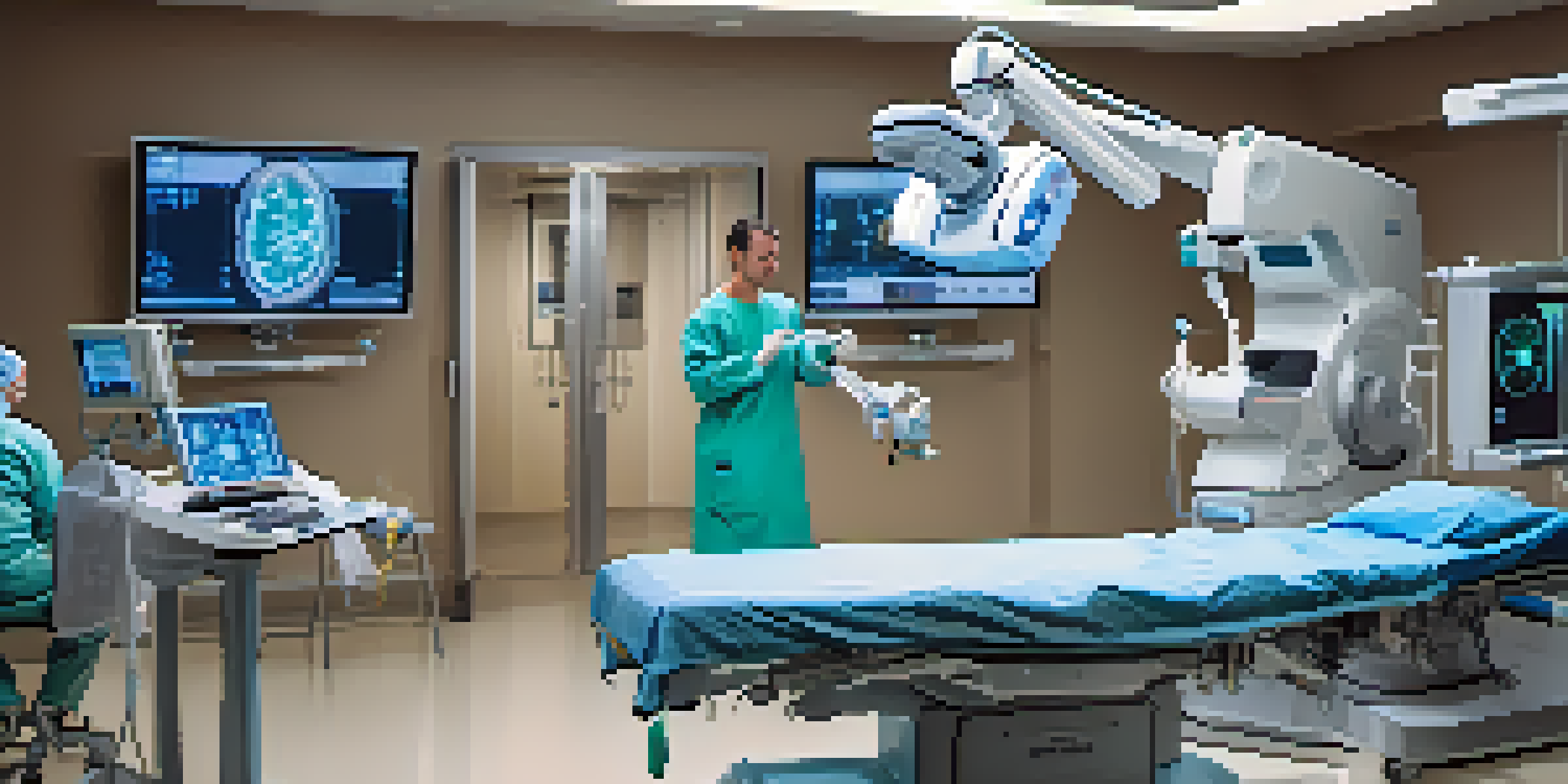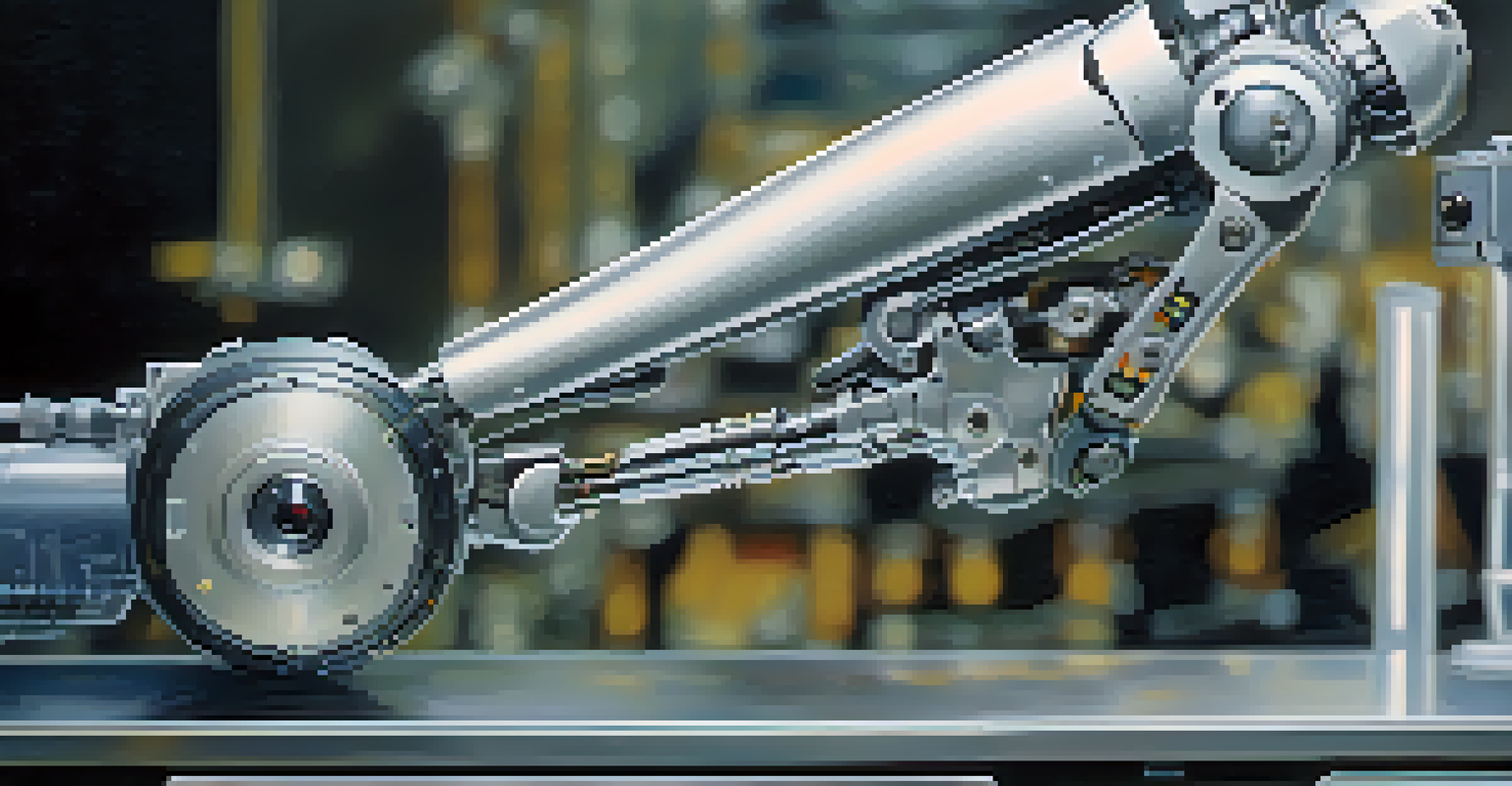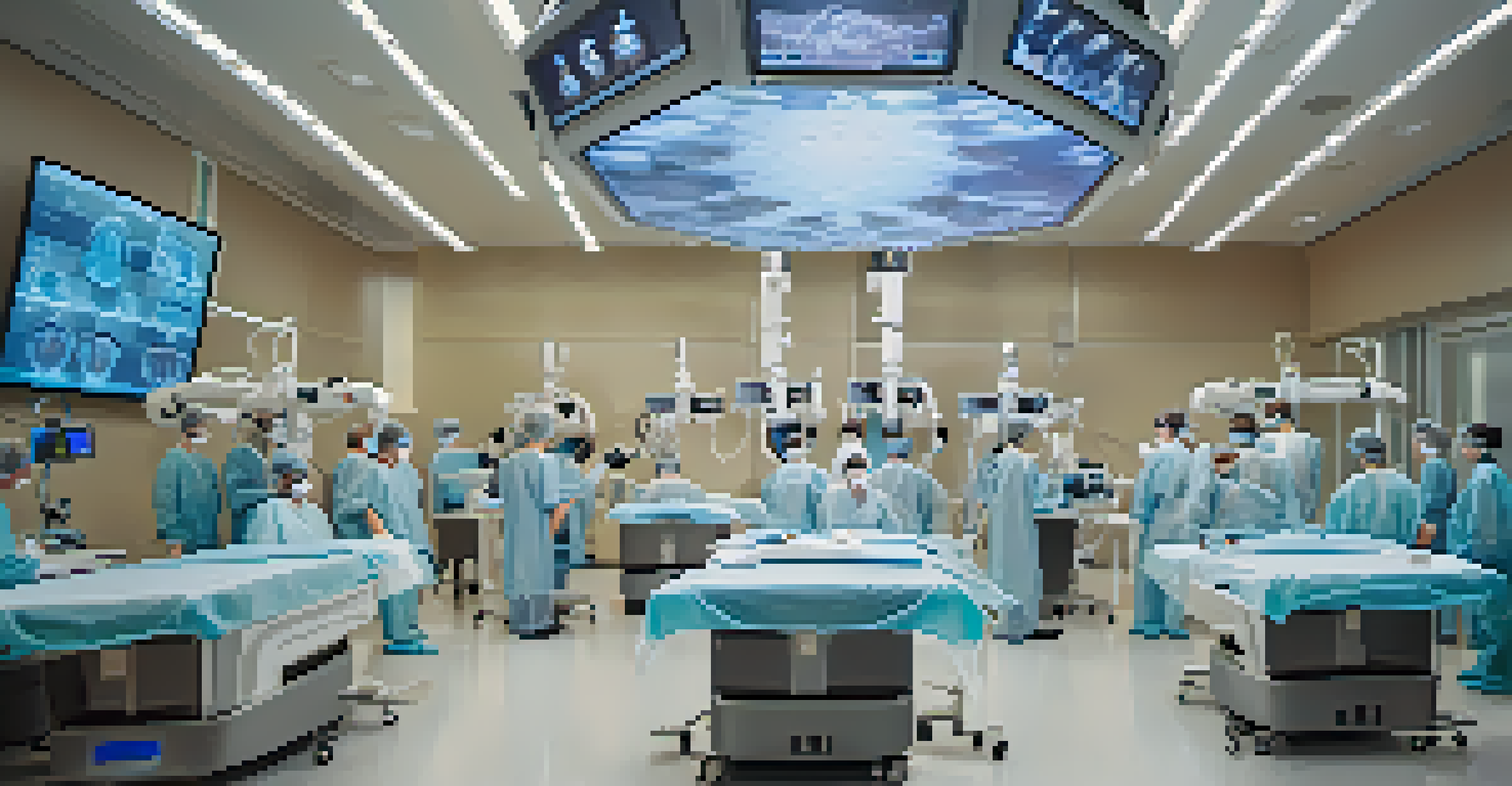AI-Driven Robotics in Surgery: Precision and Efficiency

The Rise of AI in Surgical Robotics
In recent years, the integration of artificial intelligence in surgical robotics has transformed the landscape of modern medicine. Surgeons now have access to advanced robotic systems that enhance their capabilities, allowing for more precise and efficient procedures. This evolution is not just a trend; it's a substantial leap forward in how surgeries are performed, impacting patient outcomes positively.
The future of surgery is not about man versus machine, but rather man with machine.
AI-driven robotics can analyze vast amounts of data in real-time, assisting surgeons with decision-making during operations. For instance, these systems can identify potential complications before they arise, which can be critical in high-stakes environments. The collaboration between human expertise and robotic precision creates a synergy that has never been seen before in the operating room.
As hospitals and medical centers continue to adopt these technologies, the benefits extend beyond the operating table. Patients experience shorter recovery times and fewer complications, leading to overall improvement in healthcare quality. This is just the beginning of how AI is reshaping surgical practices.
Precision: The Heart of Surgical Robotics
Precision is paramount in surgery, where even the slightest error can lead to significant consequences. AI-driven robotics enhances this precision by utilizing advanced algorithms and machine learning techniques to guide surgical instruments with unparalleled accuracy. Imagine a surgeon operating with a steady hand but augmented by robotic arms that can execute movements with millimeter-level precision.

These robotic systems are equipped with high-definition cameras and sensors that provide surgeons with enhanced visual feedback. This technology can magnify the surgical field and reveal details that might otherwise go unnoticed by the naked eye. Such clarity allows for more informed decisions during procedures, ultimately improving patient safety.
AI Enhances Surgical Precision
AI-driven robotics provide surgeons with millimeter-level precision, improving patient safety and outcomes.
Moreover, AI's ability to learn from past surgeries means that robotic systems continuously improve their performance. Each operation provides valuable data that refines their algorithms, leading to even greater precision in future procedures. This feedback loop is a game-changer in surgical practices.
Efficiency Gains in the Operating Room
Efficiency in the operating room is crucial for maximizing resources and minimizing patient wait times. AI-driven robotics not only streamline surgical processes but also reduce the duration of surgeries. With robots handling repetitive tasks, surgeons can focus on the more complex aspects of the procedure, leading to quicker operations.
AI will not replace doctors, but it will make them better at their jobs.
In addition to saving time during surgeries, robotic systems can also facilitate smoother workflows. For example, they can assist in instrument handling and retrieval, which decreases the likelihood of delays caused by misplaced tools. This enhanced coordination can significantly improve the overall efficiency of surgical teams.
Ultimately, the increased efficiency translates to more surgeries being performed in a given timeframe, benefiting both patients and healthcare providers. As hospitals face growing demands, these robotic systems provide a viable solution to meet those challenges head-on.
Training Surgeons for the Future
As AI-driven robotics become more prevalent in surgery, training the next generation of surgeons is essential. Medical schools and residency programs are beginning to integrate robotic training into their curricula, ensuring that new surgeons are equipped with the necessary skills. This hands-on experience with robotic systems prepares them for a future where these tools are commonplace in surgical settings.
Simulation-based training allows surgeons to practice their skills in a risk-free environment before entering the operating room. These simulations create realistic scenarios where trainees can learn to navigate the complexities of robotic surgery. The combination of traditional surgical techniques and robotic training fosters a well-rounded skill set in future surgeons.
Efficiency Boosts Surgical Workflow
Robotic systems streamline surgical processes, allowing for quicker operations and better resource management.
Moreover, mentorship programs that pair experienced surgeons with trainees can further enhance this learning process. As seasoned professionals share their insights on using robotic systems, the knowledge transfer ensures that best practices are upheld, ultimately benefiting patient care.
Patient Outcomes: A Focus on Safety and Recovery
The primary goal of any surgical intervention is to improve patient outcomes, and AI-driven robotics are making significant strides in this area. With enhanced precision and efficiency, these technologies lead to fewer complications during and after surgery. Patients can enjoy shorter hospital stays and quicker recoveries, allowing them to return to their daily lives faster.
For example, minimally invasive robotic surgeries often result in smaller incisions, which not only reduce pain but also minimize scarring. This less invasive approach can significantly enhance the overall patient experience. As healthcare systems continue to prioritize patient-centric care, the role of AI in improving surgical outcomes cannot be overstated.
Additionally, tracking patient recovery through AI systems allows for better post-operative care. By analyzing recovery data, healthcare providers can identify trends and make informed decisions about follow-up treatments. This holistic approach to patient care ensures that the focus remains on long-term health and well-being.
Ethical Considerations in Robotic Surgery
As with any technological advancement, the integration of AI-driven robotics in surgery raises ethical questions that need to be addressed. Concerns about patient consent, data privacy, and the potential for over-reliance on technology are at the forefront of this discussion. It is essential for healthcare providers to navigate these issues thoughtfully as they adopt new technologies.
Ensuring that patients are fully informed about the use of robotics in their surgical procedures is crucial. Clear communication about the benefits and risks associated with robotic surgery can empower patients to make informed decisions about their care. Transparency in how these technologies work and their role in their treatment can build trust between patients and healthcare providers.
Ethics in Robotic Surgery
The integration of AI in surgery raises important ethical considerations regarding patient consent and accountability.
Furthermore, the ethical implications of AI decision-making in surgery must be carefully considered. As robotic systems become more autonomous, it raises questions about accountability in the event of complications. Developing guidelines and standards for the responsible use of AI in surgical settings is vital to maintain ethical integrity in healthcare.
The Future of AI-Driven Robotics in Surgery
Looking ahead, the future of AI-driven robotics in surgery is bright and full of potential. As technology continues to advance, we can expect even more sophisticated systems that integrate AI seamlessly into surgical workflows. This evolution will likely lead to even greater levels of precision and efficiency, further transforming the surgical landscape.
Research and development in this field are rapidly progressing, with innovations such as AI-assisted diagnostics and predictive analytics becoming more common. These advancements will empower surgeons to make more informed decisions before they even step into the operating room. The integration of AI throughout the entire surgical process signifies a paradigm shift in how we approach patient care.

Ultimately, the goal is to create a future where surgery is safer, more precise, and more efficient for all patients. As AI-driven robotics continue to evolve, they will undoubtedly play a crucial role in shaping the next generation of surgical practices, setting new standards for excellence in healthcare.